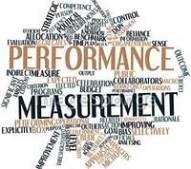Numbers and the Bottom-line
Business is and always has been a numbers or a bottom-line results game. With the advancements in information processing technology, today’s executives have access to a range of data which is nearly infinite in its depth and breath. There is almost nothing that a computer can’t process at incomprehensible speeds producing the opportunity for “big-data” analytics on just about anything. Computers are churning numbers out on sales volume, accounts receivable and payable, production efficiency, market penetration, customer buying preferences, as well as making suggestions about what you should buy next and hundreds of other subjects including projections for the future. The numbers tell management how much something costs, how many units are being produced and sold, how long the lead time is for delivery of parts or products. They are not only descriptive, they are also predictive. In short, they drive the business.
Diversity and Inclusion executives as well as other diversity professionals face many challenging audiences when it comes to demonstrating diversity’s contribution and value; however some of the toughest audiences are in their own company’s or client’s C-suite. Most executives enter these meetings with at least two perspectives. First, they are wondering are you credible and confident enough to be here? In very short order these executive will form an impression of you and make assumptions about your department/organization’s performance based upon the results you have produced for the organization. Were these results tangible and performance based? Is there clear evidence that it was your Diversity initiative that generated these outcomes? What else could have contributed to this result?
Second, did the results you produced help the organization take advantage of an opportunity, meet a need, and/or solve a business-related problem? In other words, did your department’s Diversity initiatives produce outcomes that add measurable value in financial and other terms? Executives listen for impact and want to know there is urgency and opportunity around the topic you are presenting to them. To keep your meeting with them focused, you must consider how your measurement conversation states a clear takeaway upfront and tells them what your efforts have accomplished in ROI terms as well as delineate what you need from them.
Demonstrating a Diversity ROI (DROI®) Causal “Chain of Impact”
A successful meeting offers “direction”. Once they hear your message, executives will want to know how you can prove the results were delivered and what you plan to do next. The Diversity ROI (DROI®) methodology you use to produce the results must give them a step-by-step roadmap so they buy into the claims you make about the results. The Hubbard Diversity ROI (DROI®) methodology for example, provides seven levels of analysis using “evidence-based” outcome approaches that demonstrate a “causal chain of impact” to the results generated. These analysis levels include:
- Level-0: Business Needs/Performance Analysis
- Level-1: Reaction, Satisfaction, and Planned Actions Analysis
- Level-2: Learning Analysis
- Level-3: Application and Behavioral Transfer Analysis
- Level-4: Business Impact Analysis
- Level-5: Benefit-to-Cost; Diversity Return-on-Investment Analysis
- Level-6: Intangibles Analysis
This allows C-suite and Board-level executives to follow the step-by-step actions taken that are linked to the results produced from the Business Needs/Performance Analysis phase through to their development, implementation and ROI impact. You will know the conversation was successful and had “impact” if it ends with the executives taking action in concert with your intended objectives and what is in the best interest of the organization.
It is much easier to achieve this success if your Diversity initiatives contain specific measures, Key Performance Indicators (KPIs) and other analytics that are measurable as well as linked and aligned with issues and challenges important to the business. These numbers can be validated by showing current and actual historical data that reflect the impact of the results and their reported value by others who apply and have success using the Diversity-based solutions you develop. They can also be compared to internal and external benchmarks that give a C-Suite executive comparative data to judge the outcome’s relative performance and contribution value. One of the Hubbard Metriclink® Diversity ROI Monitoring and Benchmarking Services for example, helps organizations track, monitor, and measure and assess the global impact of their Diversity progress in the following Global Benchmark Areas and much more:
- Market Share ROI
- Diversity Training, Education and ROI Impact
- Vision, Goals, and Policies
- Diversity Communications
- Performance Improvement Training and Career Development
- Community and Government Relations
- Products, Services, and Supplier Relations
- Marketing and Customer Services
- Performance Improvement
- Diverse Workforce Innovation and Creativity ROI
- Leadership and Accountability
- And at least 15 other areas
Using this approach, C-Suite executives can compare the results your Diversity interventions have achieved against local and global performance benchmarks. This will help set Diversity and Inclusion measurement standards for future performance and best practices in the organization’s competitive marketplace.
Why Now?
In the past decade, a variety of concurrent and other forces have driven additional focus on measuring the impact of Diversity and Inclusion programs and interventions including measuring the financial contribution and ROI. These forces continue to challenge old ways of defining an intervention’s or program’s success.
Diversity Intervention Failures
Almost every organization encounters unsuccessful Diversity interventions and programs – interventions and programs that go astray, costing far too much and failing to deliver on promises. Project disasters also occur in other parts of business organizations as well as in government and nonprofit organizations. Many critics of these projects suggest these failures could have been avoided if 1) the project is based upon a legitimate need stemming from a comprehensive business and performance needs analysis from the beginning, 2) adequate planning is in place at the outset, 3) data is collected throughout the project to confirm that the implementation is on track, and 4) an impact study is conducted to detail the project’s contribution. Unfortunately, these steps are unintentionally omitted, not fully understood, or purposely ignored; thus, greater emphasis is being placed on the process of accountability.
Shifting to Evidence-Based, “Science-based” and Outcome-based Diversity Management Approaches
It is critical for our profession (Diversity and Inclusion) to begin immediately moving to fact-based or evidence-based Diversity management and measurement. This means applying Diversity and Inclusion measurement sciences as a “performance improvement technology”, not merely a cobbling of diversity programs and interventions focused solely or primarily on talent management and pipeline challenges. Evidence-based Diversity management proceeds from the premise that using better, deeper logic, facts and prescriptive and predictive analytic methods to the extent organizations and their employees are able to drive business outcomes and objectives is a much more effective and efficient approach. This allows the organization to strategically utilize scarce resources. It is based on the belief that organizations must face the hard facts about what works and what does not work, and reject poorly designed and non-evidence based Diversity and Inclusion initiatives that often pass for sound advice and solutions. This will help organizations perform better in the long run. This move to fact and “Diversity ROI Sciences-based®” approaches supports the expansion to a comprehensive set of success analytics and measures, including financial ROI, and leads to better organizational decisions regarding methods to drive business performance outcomes.
Executive Appetite for Diversity ROI (DROI®) Value
Providing monetary contribution and Diversity ROI (DROI®) reporting is receiving increasing interest in the executive suite. Top managers who watch budgets continue to grow without specific accountability measures are frustrated, and they are responding to the situation by requiring functions to show their value and worth. They are beginning to demand ROI calculations and monetary contributions from departments and functions that previously were not required to produce them, especially given the current economy. As a consequence, in some subtle and not-so-subtle ways, Diversity departments that do not show their value are experiencing:
- Budget cuts out-of-line with cuts made in other department
- Whole positions or talent resources being eliminated or transferred to other departments
- CDO reporting relationships changed to report into the Human Resources function instead of a direct line relationship to the CEO, President, Board or as a member of the C-Suite
- Access to key influential people and resources diminished due to poor internal brand image and lack of credibility in the results delivered
- Perceptions of Diversity and Inclusion as not really essential to core business drivers, operational processes and market needs
For years, these function and department heads had convinced executives that their processes could not be measured and their activities should be taken on faith. Well…the era of “faith-based” Diversity interventions is over and has been for some time. Executives no longer buy that argument; they are demanding the same accountability from these functions as they do from sales and production areas of the organization. These major forces are requiring organizations to shift their measurement process to include the financial impact and ROI. When Diversity and Inclusion organizations incorporate these Diversity ROI (DROI®) processes and strategies as a standard part of their practice and performance outcome delivery, they are viewed as truly credible strategic business partners. As a result, Diversity intervention outcomes are valued as core to the organization’s business and its success! Let me know what you think at edhub@aol.com.
* “DROI®” and “Diversity ROI Sciences-based®” are registered trademarks of Hubbard & Hubbard, Inc., All Rights Reserved.
Dr. Ed Hubbard is the President & CEO of Hubbard & Hubbard, Inc., and recognized as Personal Success Coach and Mentor as well as the Founder of the Diversity Measurement and Diversity ROI Analytics fields. Dr. Hubbard is an expert in Organizational Behavior, Organizational Analysis, Applied Performance Improvement and Measurement Strategies, Strategic Planning, Diversity Measurement, and Organizational and Individual Change Methodologies. He holds a Practitioner Certification and Master Practitioner Certification in Neurolinguistic Programming (NLP), a Neuro-science discipline. Dr. Hubbard earned Bachelors and Masters Degrees from Ohio State University and earned a Ph.D. with Honors in Business Administration.
For more information about the Hubbard Diversity ROI Institute, log onto http://www.hubbardnhubbardinc.com/certification-workshps.html

 There has been a shift from faith-based to fact-based investing. Soft functions such as a leadership development, employee engagement or diverse work team programs are often assumed to be making a difference. This suggests it would be difficult to measure and place a monetary value on the project, and more difficult to connect the particular initiative to a business impact measure.
There has been a shift from faith-based to fact-based investing. Soft functions such as a leadership development, employee engagement or diverse work team programs are often assumed to be making a difference. This suggests it would be difficult to measure and place a monetary value on the project, and more difficult to connect the particular initiative to a business impact measure.

